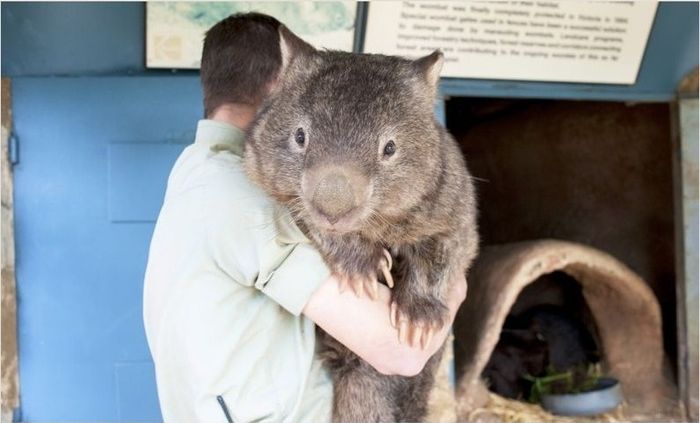|
|
Patrick, 27-year-old Wombat
|
Discovery and naming
After the ship Sydney Cove ran aground on Clarke Island in February 1797, the crew of the salvage ship, Francis, discovered wombats on the island. A live animal was taken back to Port Jackson. Matthew Flinder, who was travelling on board the Francis on its third and final salvage trip, also decided to take a wombat specimen from the island to Port Jackson. Governor John Hunter later sent the animal's corpse to Joseph Banks at the Literary and Philosophical Society to verify that it was a new species. The island was named Clarke Island after William Clark
The name "wombat" comes from the now nearly extinct Darug language spoken by the Aboriginal Darug people who originally inhabited the Sydney area. It was first recorded in January 1798, when John Price and James Wilson, a white man who had adopted Aboriginal ways, visited the area of what is now Bargo, New South Wales. Price wrote: "We saw several sorts of dung of different animals, one of which Wilson called a Whom-batt, which is an animal about 20 inches high, with short legs and a thick body with a large head, round ears, and very small eyes; is very fat, and has much the appearance of a badger." Wombats were often called badgers by early settlers because of their size and habit. Because of this, localities such as Badger Creek, Victoria, and Badger Corner, Tasmania, were named after the wombat. The spelling went through many variants over the years, including "wambat", "whombat", "womat", "wombach" and "womback", possibly reflecting dialectal differences in the Darug language.
|
|









